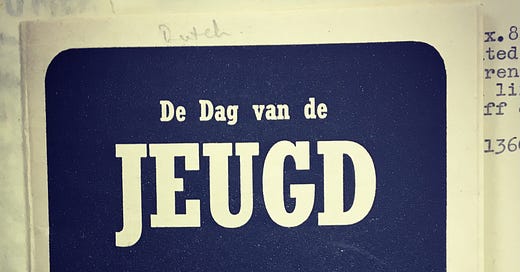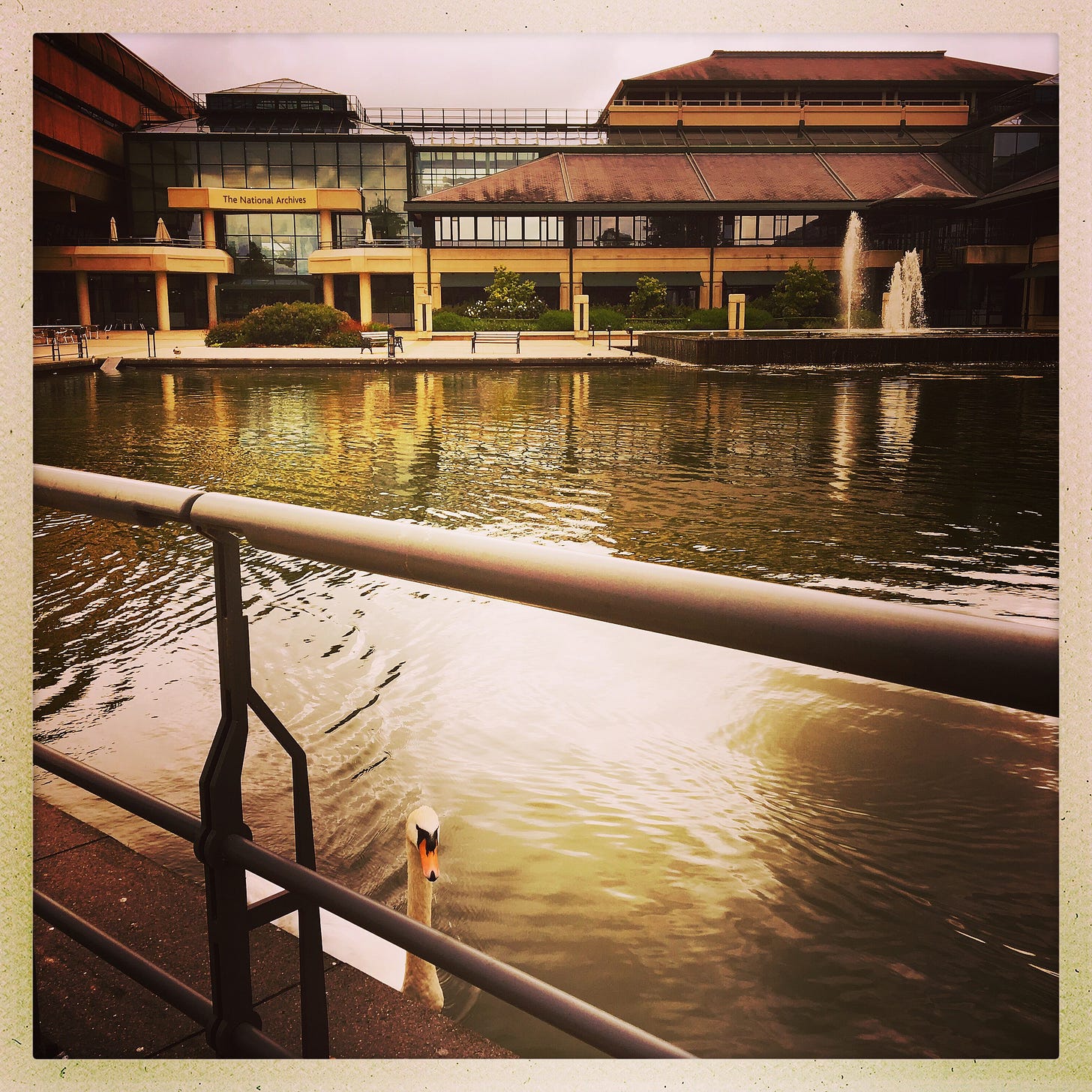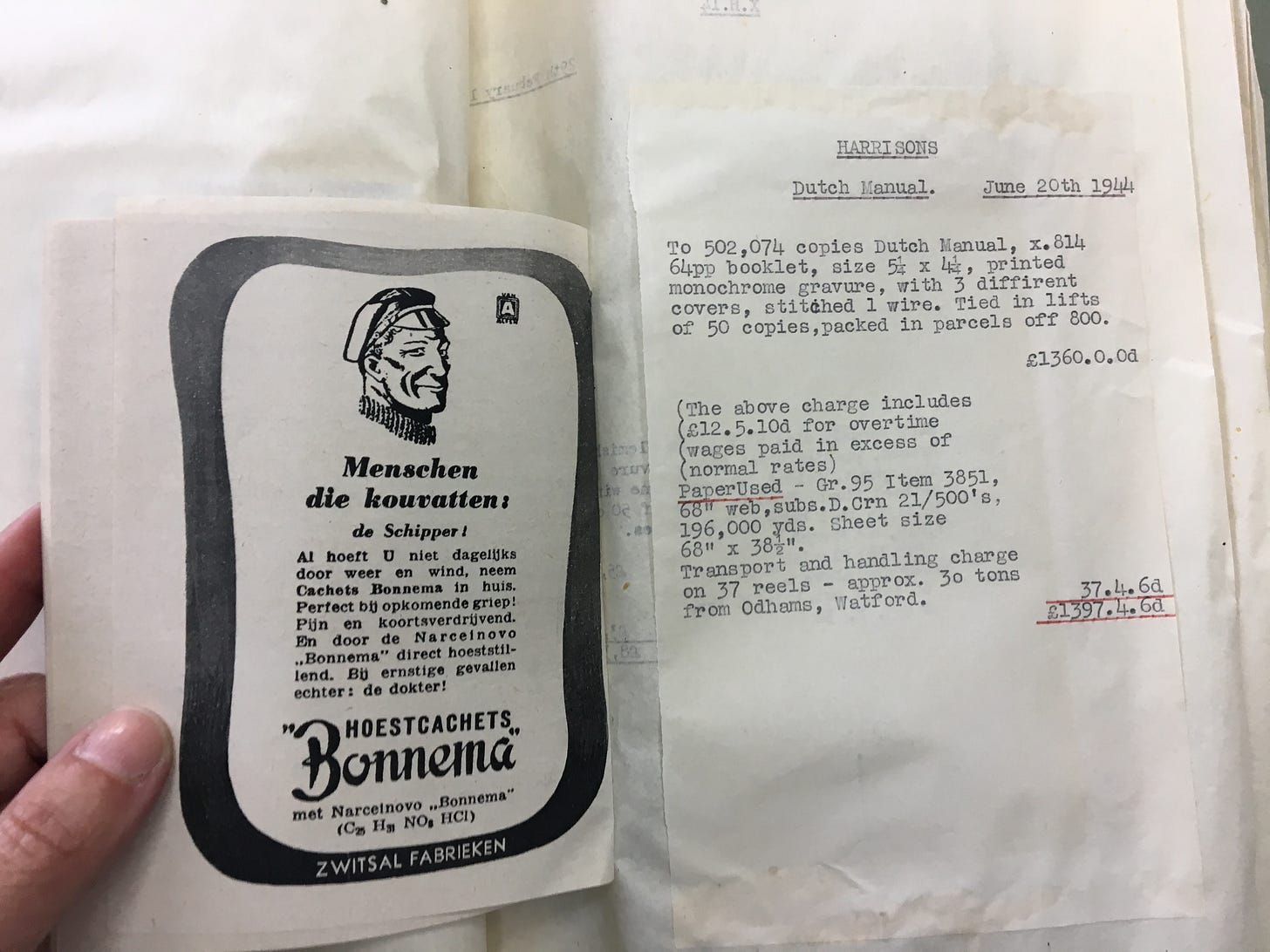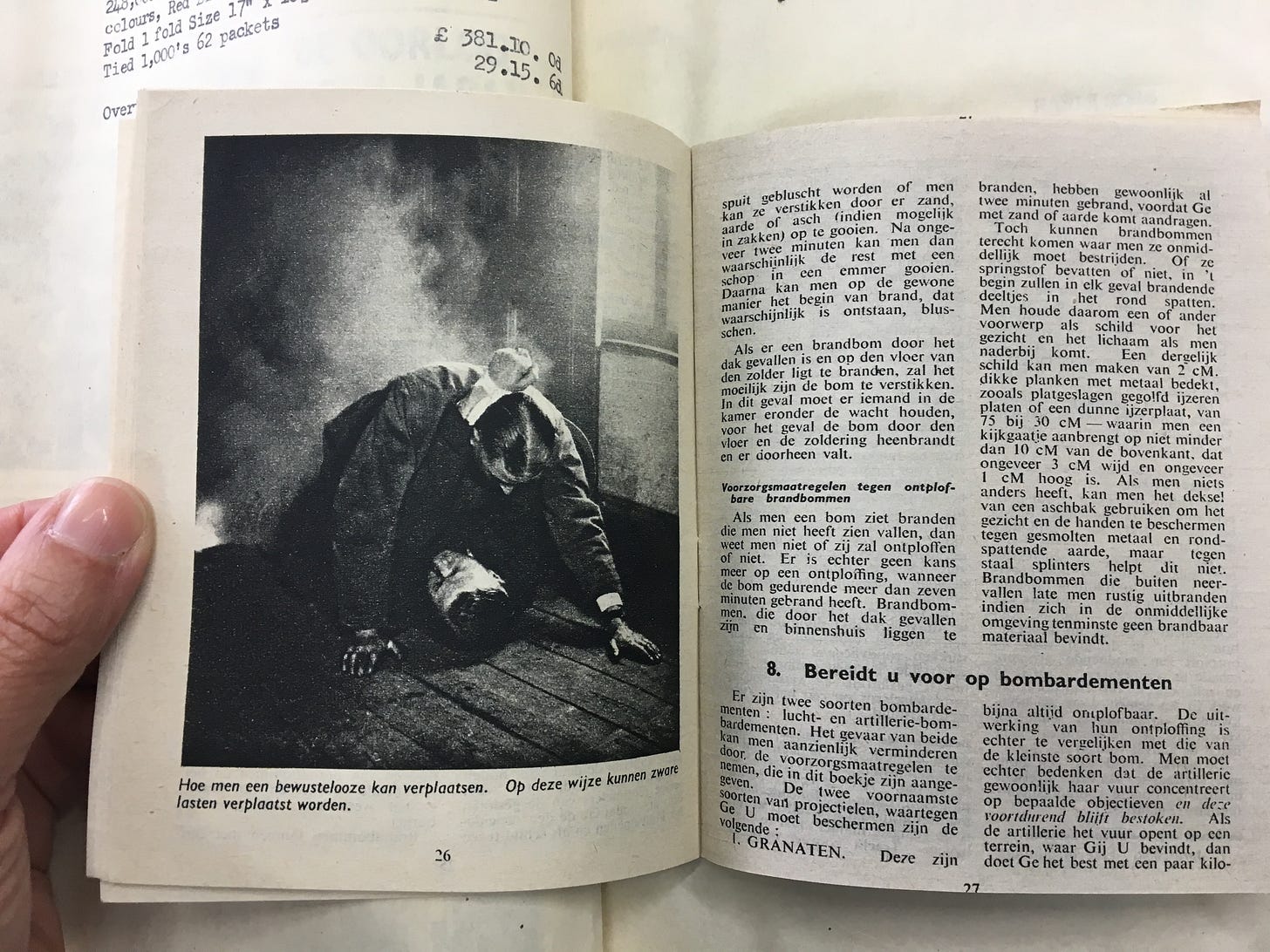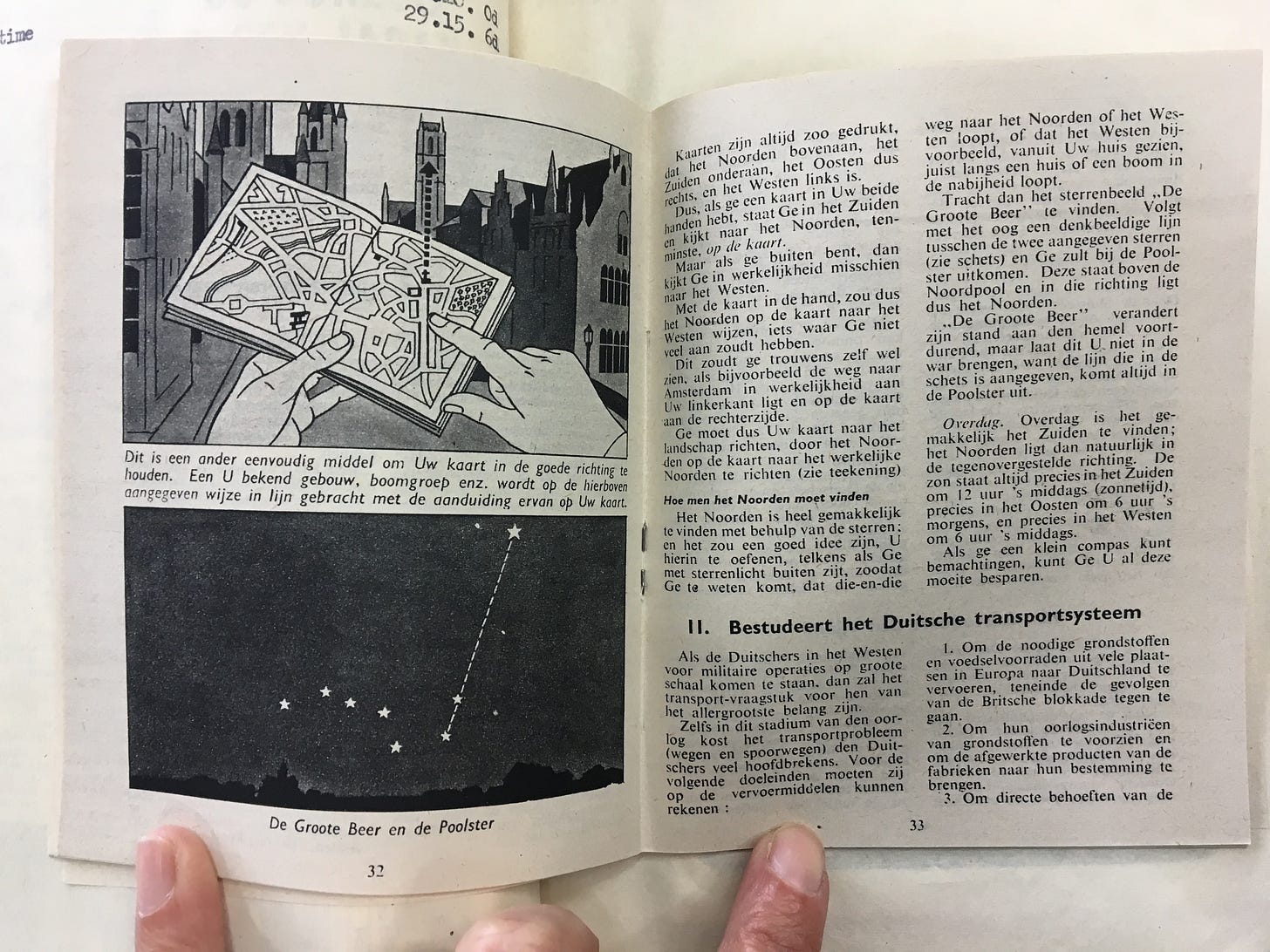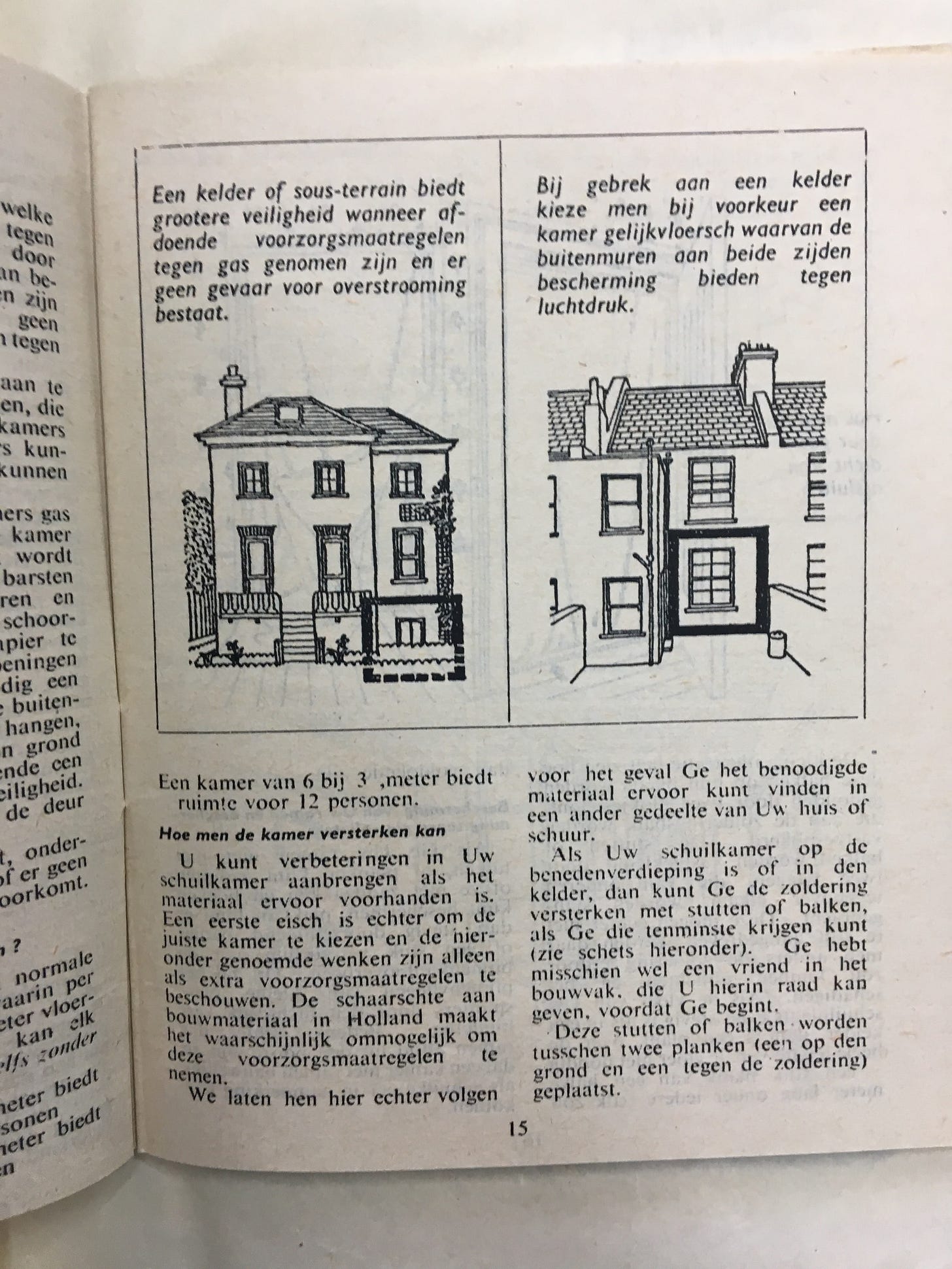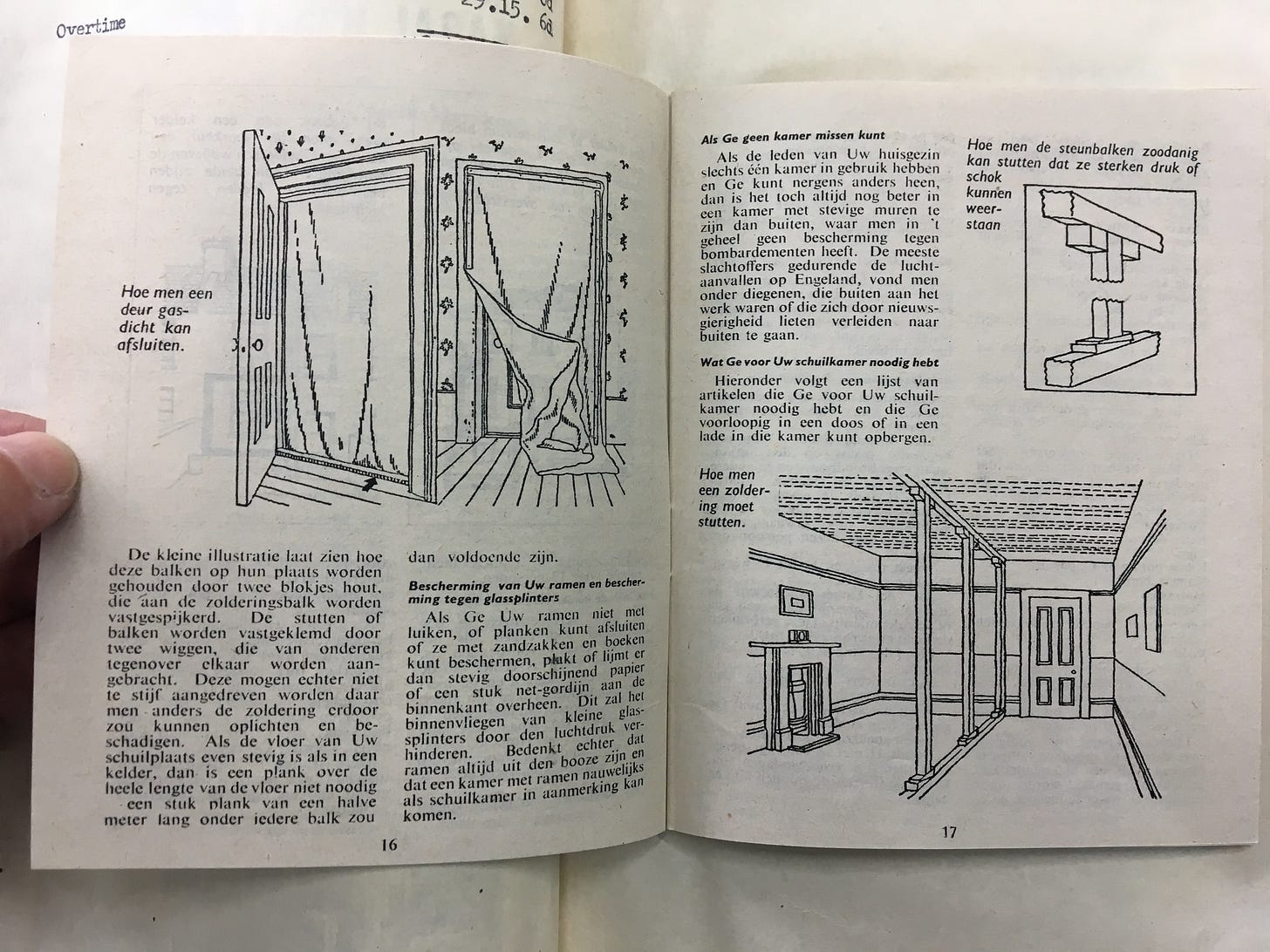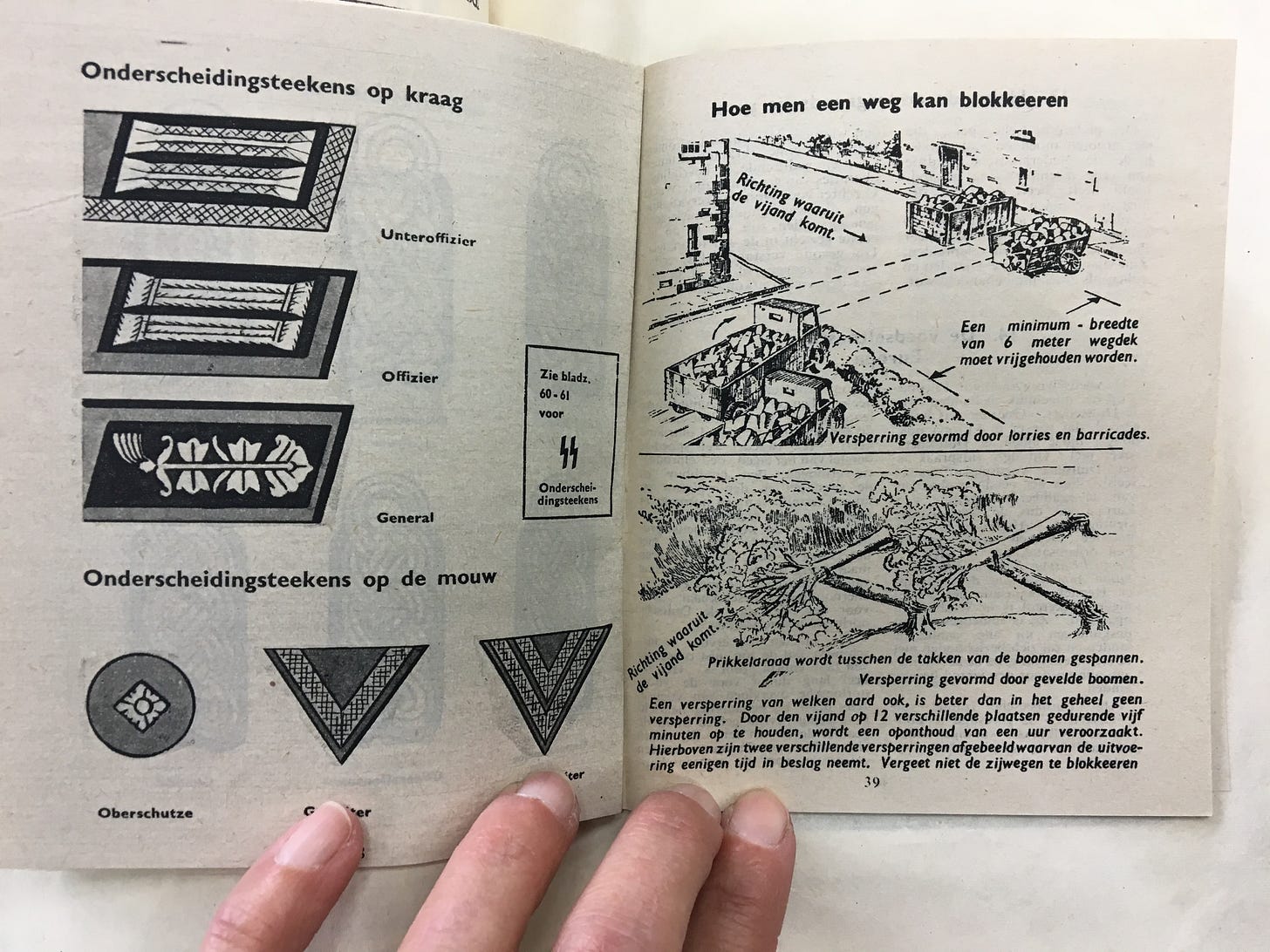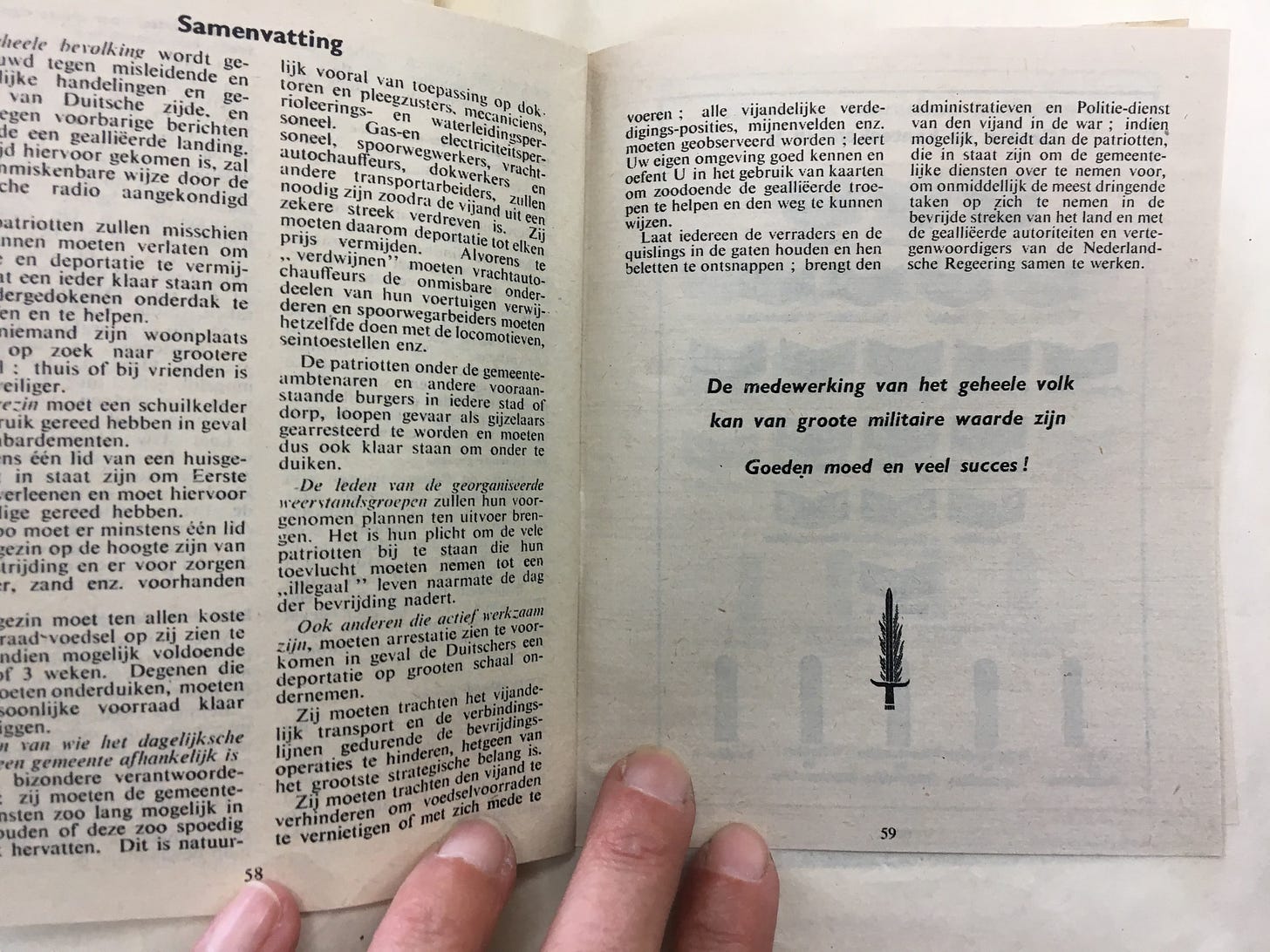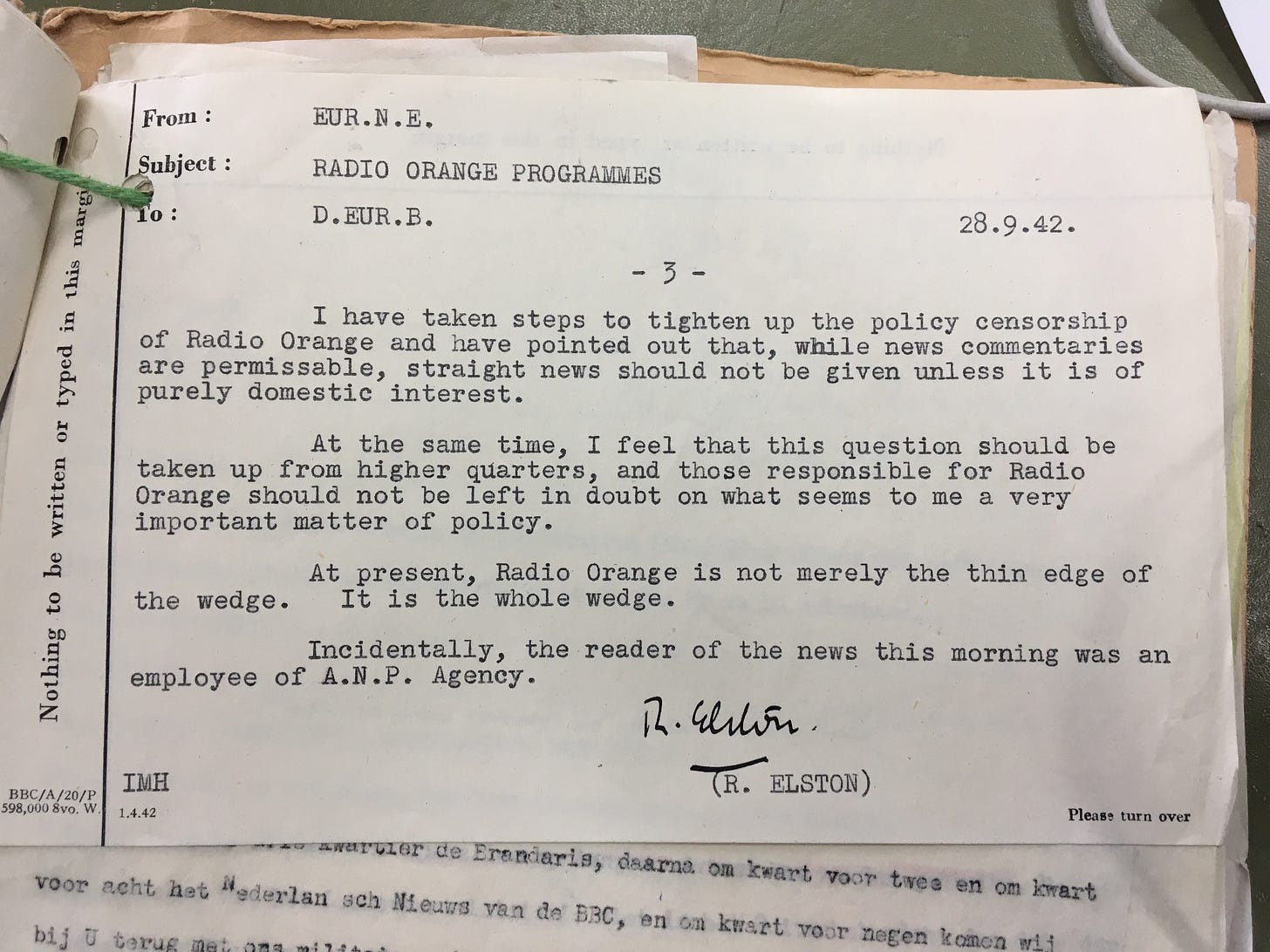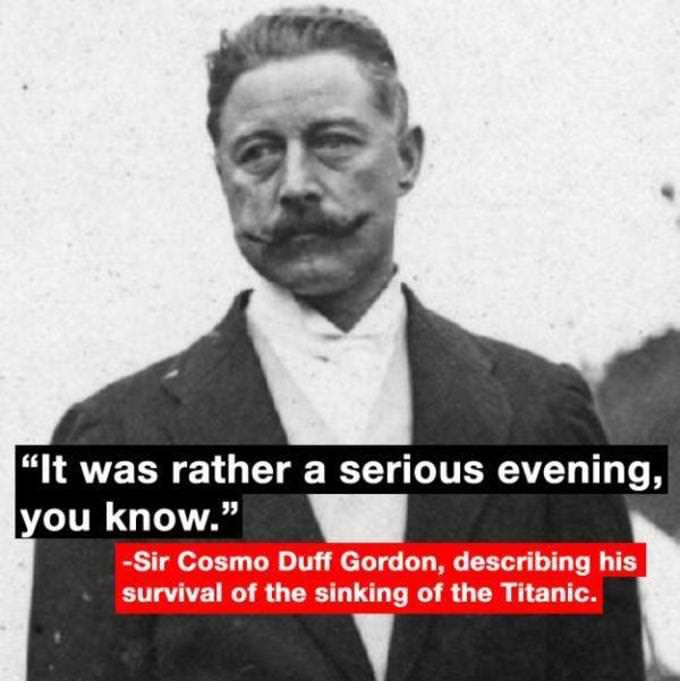Dear CSTers,
In the seven years I spent working on To Die Beautiful / The Girl with the Red Hair, one of the most memorable documents I came across was a small pamphlet (4 x 5”) entitled The Day of the YOUTH: A call to the Dutch people, printed in June 1944.
I found the pamphlet at The National Archives of the UK, located in Kew, just outside London (or is part of London? Honestly, I could never figure it out).
I went to the UK because I was curious about the other side of the Dutch Resistance: their allies abroad. With Queen Wilhelmina self-exiled in London for the duration of the war, the UK was a hub for the cause of Dutch freedom.
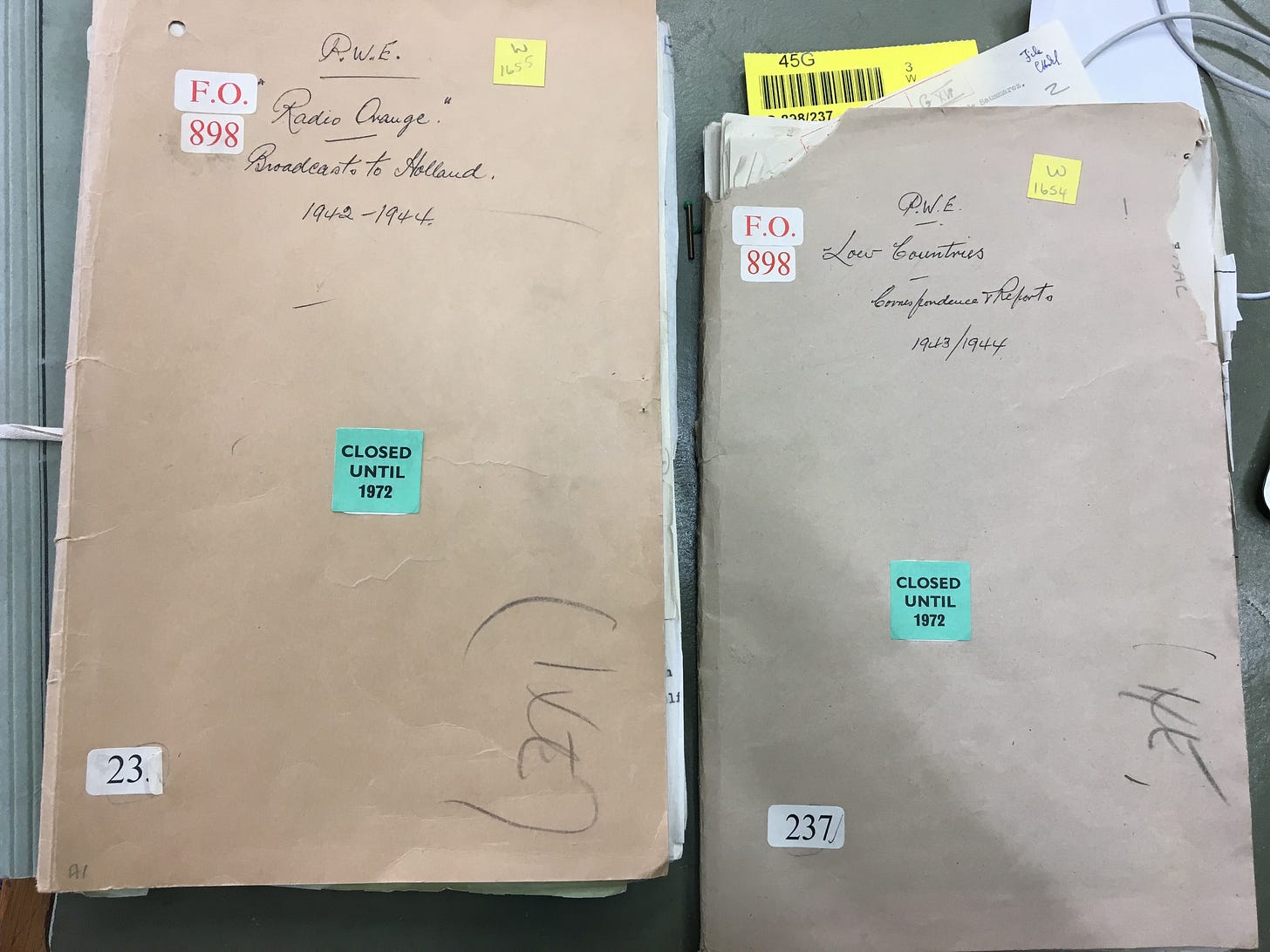
As I read through dozens of files containing all sorts of interoffice communication about how best to support the Resistance movements of continental Europe, out fell this little pamphlet, The Day of the Youth.
Written in Dutch, the pamphlet is a survival guide, offering tips and even diagrams to help everyday Dutch people make it through what was by now four long years of war. I was so moved by this little pamphlet. To think of all the work that went into it, from the diagrams and drawings to the cheering messages, so much effort went into creating half a million pamphlets and then delivering them via airdrop across the Low Countries by the Royal Air Force.
In this image, we see a demonstration of “How to move an unconscious person,” something that comes in handy when you’re an armed Resistance member. Other advice was equally practical.
How to navigate by starlight or landmark, in case you need to escape in the middle of the night.
Instructions on how to construct a hidden room big enough “for twelve people.”
Instructions for sealing rooms for sound and increasing structural support for hidden rooms and extra people (i.e., hiding Jewish people)
How to recognize various German military insignia; how to create a roadblock (sabotage)
Translation: “The cooperation of the people can be of great military value. Good luck and much success!”
Amongst the hundreds of documents, some were more personal than others. I never learned the name of the authors of the pamphlet, but I did find this incredible memo from someone named R. Elston in 1942:
From the professionalism of the writing to the homey green yarn looping all the related documents together, I love everything about this memo. But especially this, Ellston’s urgency, verging on confrontation, when he describes how important Radio Orange is to the Dutch Resistance [please read to yourself in a crisp British accent]:
“At present, Radio Orange is not merely the thin edge of the wedge. It is the whole wedge.”
I love British understatement.
This coming weekend (May 24-26, 2024) I’ll be teaching a workshop on “Research for Historical Fiction” at the Mountain Words Festival in beautiful Crested Butte, Colorado. I probably won’t have time to talk about this little pamphlet there, so thanks for giving me the opportunity to do so here. Every time I revisit it, I’m so touched by the desperation to help in those creating the pamphlet, and by a different kind of desperation amongst those who snatched it from the air as it fell from the sky, tucking it into their coats where the police and German soldiers wouldn’t find it, saving it to read in the privacy and relative safety of their own home, with whoever might be hiding inside it. Documents like these make all the hours spent scrambling through boxes of boring, bureaucratic bullshit worth it.
That wraps up this edition of CST. Thanks for reading and if you enjoyed it, please repost and/or share with a friend! Thanks, CSTers, and happy summer!
xo Buzzy


